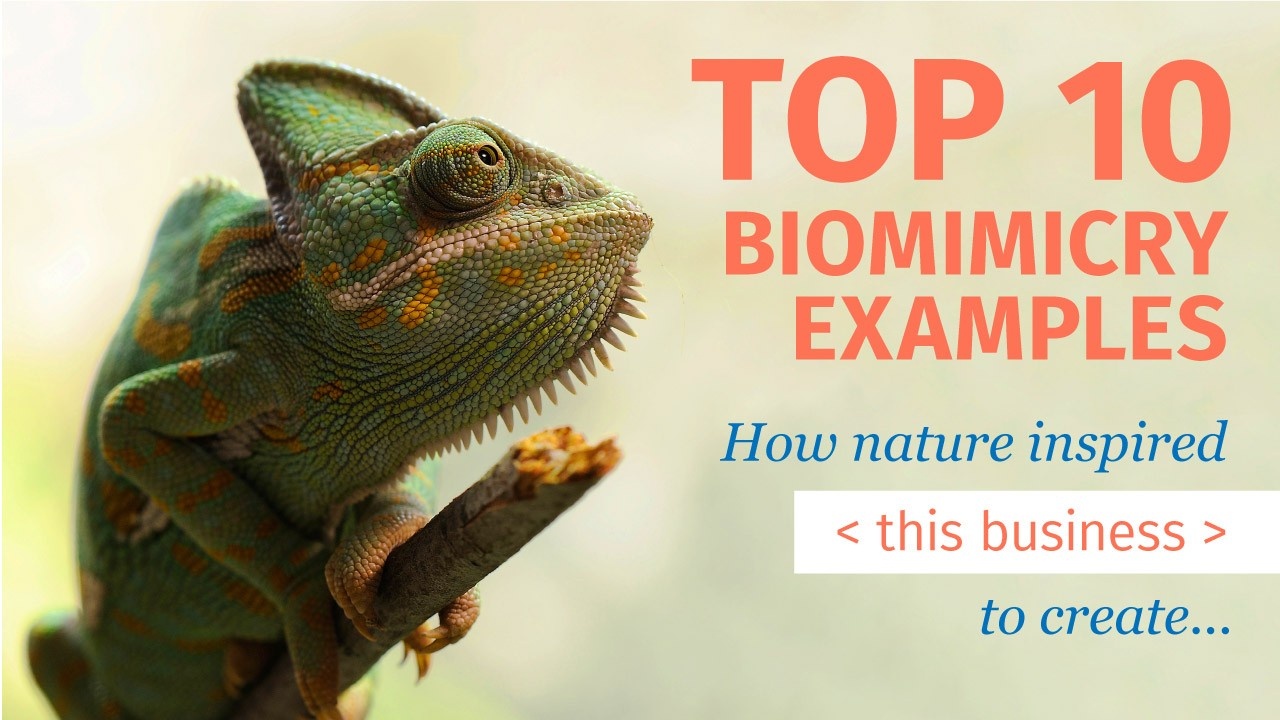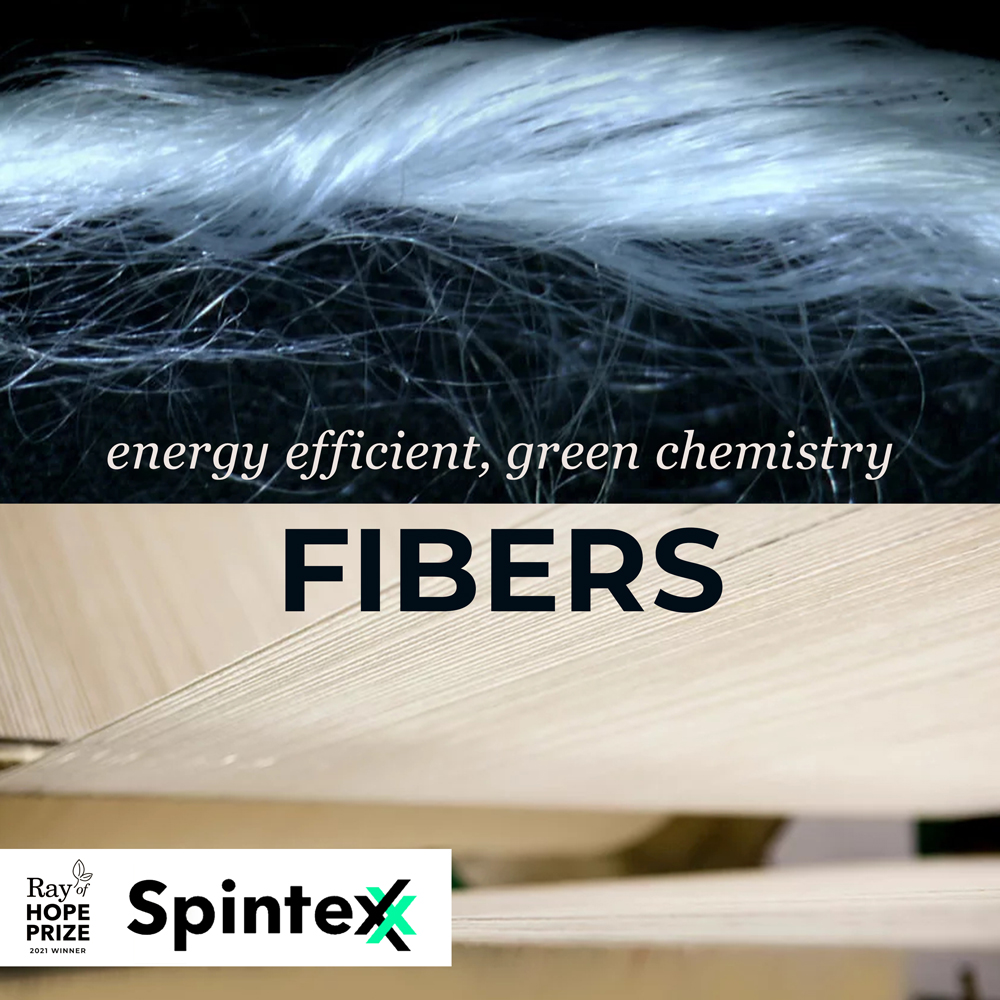10 Innovative Biomimicry Business Examples

Hi there, Change Makers
Below is a list of 10 innovations inspired by nature. Each solution has an emerging biomimicry-based business. We look forward to seeing how they grow and evolve over time.
Huge thanks to the Biomimicry Institute for providing information on each company.
Without further ado, let's see who's in the Top 10!
1. Mimicking Spider Silk:
Spintex Engineering 🕷


The Biomimicry Institute's Ray of Hope Prize of 2021 went to Spintex, a spider-inspired silk company. Spider silk is often cited as one of the strongest biological materials in the world, and scientists have long been searching for a way to artificially synthesize this silk for human use as a textile fibre. Spintex Engineering has finally cracked the spider’s code and has developed a solution that mimics a spider spinnerets’ ability to spin fibre at room temperature without harsh chemicals, from a liquid gel. Their process is 1,000 times more energy-efficient than synthetic petroleum fibres, with water as their only by-product.
By mimicking how a spider spins silk at room temperature, Spintex creates high-performance, sustainable textiles that are 1,000 times more efficient than an equivalent synthetic fibre.
2. Diatoms (or Algae) Inspired Water Purification:
Aquammodate 💧
Aquammodate is on the cusp of revolutionizing the water purification industry. The team is mimicking the way diatoms form their cell wall out of silica and utilizing aquaporins, proteins that transport pure water across cell membranes throughout nature. Their energy-efficient and selective technology produces high-purity grade water in a single filter pass, desalination at any scale. It removes industrial pollutants and contaminants such as arsenic, microplastics, and pharmaceutical residues.
3. Mycelium Inspired Building Materials:
Biohm 🍄
Biohm is a bio-based building materials company that makes insulation made from mycelium (the “root” structure of mushrooms) and a 100% natural sheet material called ORB (organic refuse bio-compound) made out of biowaste and a plant-based binder. Their building materials are more affordable and outperform current products on the market. By embracing circular design and the systemic nutrient cycling found in nature, Biohm is leading innovation in the construction industry to create a more sustainable built environment.
4. Oysters Inspired Ecosystem Restoration:
GROW Oyster Reefs 🐚
Oysters are critical to maintaining healthy coastlines. They clean the water and create reefs that protect from ocean swells. To help revitalize oyster populations, GROW Oyster Reefs has created proprietary concrete mixes that are chemically similar to oyster shells, and micro- and macro-designs that attract and retain healthy oyster populations. By working with nature to restore coastal ecosystems, GROW’s products enable long-lasting habitat restoration.
5. Beetle Inspired White Pigments:
Impossible Materials 🎨
Titanium dioxide is the most used colourant in the world, found in the white traffic stripes painted on roads, in sunscreen and toothpaste, and even in powdered doughnuts. However, titanium mining has an environmental cost, and nanoparticles of titanium dioxide have recently been labelled as a suspected carcinogen. In search of an alternative, researchers studying the bright white Cyphochilus beetle found that the thin layer of scales on its exoskeleton acts as a highly optimized scattering structure, giving the beetle its bright white colouration. Impossible Materials mimics this structure with cellulose, creating a safer and better-performing white pigment.
6. Fog Harvester Beetle Inspired Water Capturing:
Infinite Cooling 🐞
40% of all water used in the US is in manufacturing sites and power plants. Much of this water leaves the facilities via high-density water vapour from industrial cooling towers. Infinite Cooling has developed an add-on process to capture cooling tower plumes, enhancing fog harvesting strategies deployed by animals such as the Namib desert beetle. By partially closing the water cycle loop at industrial facilities, Infinite Cooling helps customers save millions of dollars and hundreds of millions of gallons of water annually.
7. Mussels Inspired Underwater Adhesive:
Mussel Polymers Inc 💪
Mussel Polymers Inc. has developed a high-performance, non-toxic adhesive known as poly (catechol) styrene, or PCS, mimicking the adhesive proteins mussels use to adhere to surfaces in extreme marine environments. PCS is 300% stronger than other underwater adhesives, and bonds to a wide range of materials. Mussel Polymers will be used in a number of industries, but they are bringing their product to market first for coral restoration, solving a critical problem within the conservation ecosystem.
8. Photosynthesis Inspired Chemical Energy:
New Iridium 🌱
New Iridium has created a suite of organic chemicals that enable photocatalysis, or light-driven chemistry, eliminating the need for heavy metals or heat as catalysts. Their technology dramatically reduces the energy and time required for a wide variety of chemical reactions, lowering costs and paving the way for green chemistry to become industry standard. With products currently being used by pharmaceutical and chemical companies, New Iridium is working toward developing a platform that mimics photosynthesis by using light energy to convert water and CO2 into chemical energy.
9. Fungi Inspired Industrial Land Restoration:
Novobiom 🍄
Novobiom is tapping nature’s most powerful recyclers, fungi and microorganisms, for use in brownfields, Superfund sites, and other contaminated industrial lands. By selecting naturally occurring fungi that target specific contaminants such as oil or heavy metals, they perform mycoremediation on-site, without the need for hauling away soil to a central treatment facility. Novobiom has the potential to revitalize millions of contaminated sites around the world by naturally decomposing harmful toxins through this systems-level biomimetic approach.
10. Tidal Streams Inspired Hemp Fibre Processing:
Renaissance Fiber 🧥
Cultivating hemp for textile fibre is an ancient practice, however with the advent of modern agriculture and the invention of synthetic textiles, the processing required for hemp meant it could not compete economically with these alternatives. Renaissance Fiber has developed a degumming method based on the natural degradation of plant fibres observed in tidal streams, using far less energy than traditional hemp processing and creating hemp fibre that is more affordable and higher quality than other fibre types. At the same time, their process sequesters carbon in the effluent, which can be returned to the ocean as a natural carbon sink.
Learning more about Biomimicry 🐋
Before you go, we've got a gift for you - this (free) eBook: A Field Guide to Biomimicry.
This eBook took 10 years to build and takes 10 minutes to read.
It is the distilled essence of biomimicry. Click here to download.
Or, if you're ready to dive deeper, check out our biomimicry short courses here today. Through these courses, you'll get practical knowledge of how to apply biomimicry to your own design, a learn biomimicry certificate recognised globally (and endorsed by the Biomimicry Institute), and so much more.
Wild regards,
Alistair Daynes, Biomimicry Practitioner






















